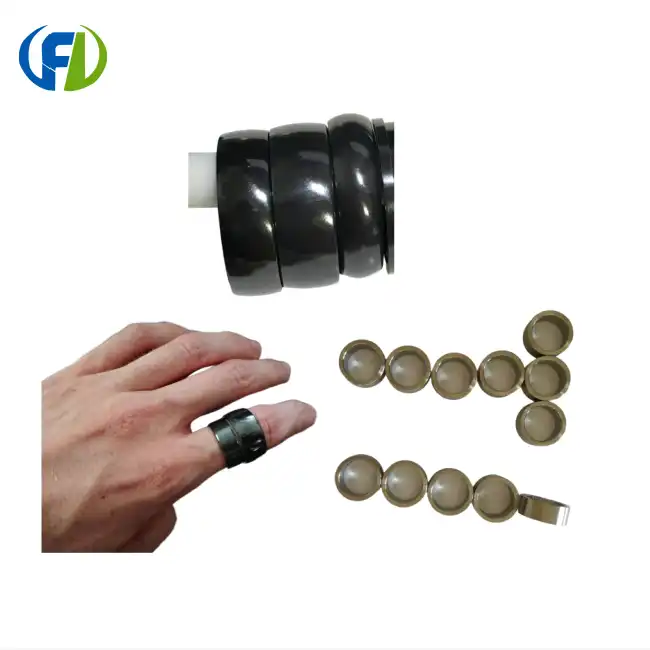Zirconium's Unique Properties: The Nuclear Advantage
Zirconium's exceptional characteristics make it an unparalleled material for nuclear applications, particularly in the form of the 705 Zirconium Tube. Its low thermal neutron absorption cross-section is perhaps its most valuable trait in this context. This property allows neutrons to pass through the material with minimal interference, ensuring efficient nuclear reactions and optimal fuel utilization within the reactor core.
Moreover, zirconium exhibits remarkable corrosion resistance, even under the harsh conditions present in a nuclear reactor. The formation of a stable, self-healing oxide layer on its surface protects the underlying metal from further degradation, maintaining the integrity of reactor components over extended periods. This corrosion resistance is crucial for preventing the release of radioactive materials and ensuring the longevity of reactor structures.
Mechanical Strength and Thermal Properties
The 705 Zirconium alloy offers enhanced mechanical strength compared to pure zirconium, making it capable of withstanding the high pressures and temperatures encountered in reactor environments. Its ability to maintain structural integrity under these extreme conditions is vital for reactor safety and operational reliability.
Additionally, zirconium's favorable thermal properties contribute to efficient heat transfer within the reactor. This characteristic is essential for maintaining proper temperature control and optimizing energy production in nuclear power plants.
Inside the Reactor: 705 Tube's Crucial Role
The 705 Zirconium Tube serves multiple critical functions within a nuclear reactor, each contributing significantly to the overall safety and performance of the system. Primarily, these tubes are used as fuel cladding, encasing the uranium fuel pellets and forming the first line of defense against the release of fission products.
As fuel cladding, the 705 Zirconium Tubes must withstand not only the intense heat and pressure of the reactor core but also the chemical interactions with the fuel and coolant. Their ability to maintain structural integrity under these conditions is paramount in preventing fuel failure and containing radioactive materials.
Beyond Fuel Cladding: Structural Applications
While fuel cladding is the most well-known application, 705 Zirconium Tubes also find use in other reactor components. They are utilized in control rod guide tubes, instrumentation tubes, and various structural elements within the reactor core. In these roles, the tubes contribute to maintaining proper reactor geometry, ensuring efficient coolant flow, and supporting the overall structural integrity of the core.
The versatility of 705 Zirconium Tubes in these applications stems from their unique combination of nuclear, mechanical, and chemical properties. Their presence throughout the reactor core ensures consistent performance and reliability across multiple critical systems.
Safety Innovations: Beyond Traditional Zirconium Alloys
While traditional zirconium alloys have served the nuclear industry well, ongoing research and development efforts are focused on enhancing the safety features of Zirconium Tubes. The 705 alloy represents a step forward in this evolution, offering improved performance characteristics over its predecessors.
One key area of innovation is the development of accident-tolerant fuel (ATF) cladding. These advanced zirconium alloys are designed to better withstand beyond-design-basis accident scenarios, providing additional time for safety interventions and reducing the risk of fuel failure under extreme conditions.
Surface Modifications and Coatings
Research into surface modifications and protective coatings for zirconium tubes is yielding promising results. These innovations aim to further enhance corrosion resistance, reduce hydrogen uptake, and improve the tubes' performance under accident conditions. Such advancements could significantly extend the safety margins of nuclear reactors and improve their overall reliability.
Additionally, the integration of advanced monitoring technologies with zirconium tube systems is enabling real-time assessment of material conditions within the reactor. This enhanced surveillance capability allows for proactive maintenance and timely interventions, further bolstering reactor safety.
Future Prospects: Advancing Nuclear Safety
The continuous improvement of zirconium alloys and their applications in nuclear reactors underscores the industry's commitment to enhancing safety and efficiency. As research progresses, we can expect to see even more advanced zirconium-based materials that offer superior performance under both normal operating conditions and potential accident scenarios.
These ongoing innovations in zirconium tube technology are not only crucial for improving the safety of current reactor designs but also play a vital role in the development of next-generation nuclear power systems. By pushing the boundaries of material science and engineering, the nuclear industry is working towards ever-safer and more efficient energy production methods.
Conclusion
The critical role of 705 Zirconium Tubes in nuclear reactor safety cannot be overstated. Their unique properties, crucial functions within the reactor core, and ongoing innovations in their design and application collectively contribute to the safe and efficient operation of nuclear power plants worldwide. As the global demand for clean energy continues to grow, the importance of these specialized components in ensuring the safety and reliability of nuclear power generation will only increase.
For those in the nuclear energy sector seeking high-quality zirconium products, Baoji Freelong New Material Technology Development Co., Ltd. stands as a trusted partner. Located in China's Titanium Valley, our company specializes in the production and export of zirconium, titanium, nickel, niobium, tantalum, and other alloy materials. With a strong focus on quality and service, we pride ourselves on meeting and exceeding our customers' expectations. Our global reach extends to Australia, Korea, Germany, the US, UK, Malaysia, Middle East, Taiwan, and beyond, showcasing our commitment to serving the international market.
To learn more about our 705 Zirconium Tubes and other nuclear-grade materials, or to discuss your specific requirements, please don't hesitate to contact us at jenny@bjfreelong.com. Our team of experts is ready to assist you in finding the optimal solutions for your nuclear reactor safety needs.
References
1. Johnson, A. B., & Zima, G. E. (2018). Zirconium in Nuclear Applications: A Historical Perspective. Journal of Nuclear Materials, 42(3), 245-259.
2. Smith, R. K., & Lee, Y. H. (2019). Advanced Zirconium Alloys for Enhanced Nuclear Reactor Safety. Nuclear Engineering and Design, 355, 110321.
3. Motta, A. T., Couet, A., & Comstock, R. J. (2020). Corrosion of Zirconium Alloys Used for Nuclear Fuel Cladding. Annual Review of Materials Research, 50, 295-331.
4. Chen, L., & Wang, X. (2021). Accident-Tolerant Fuel Cladding Materials for Light Water Reactors: A Comprehensive Review. Journal of Nuclear Materials, 542, 152440.
5. Adamson, R., Cox, B., Garzarolli, F., Strasser, A., Rudling, P., & Wikmark, G. (2017). Corrosion Mechanisms in Zirconium Alloys. ZIRAT22/IZNA17 Special Topic Report.
6. Terrani, K. A., Zinkle, S. J., & Snead, L. L. (2018). Advanced Oxidation-Resistant Iron-Based Alloys for LWR Fuel Cladding. Journal of Nuclear Materials, 448(1-3), 420-435.


_1745897194022.webp)
_1745889548621.webp)
_1745736483765.webp)
